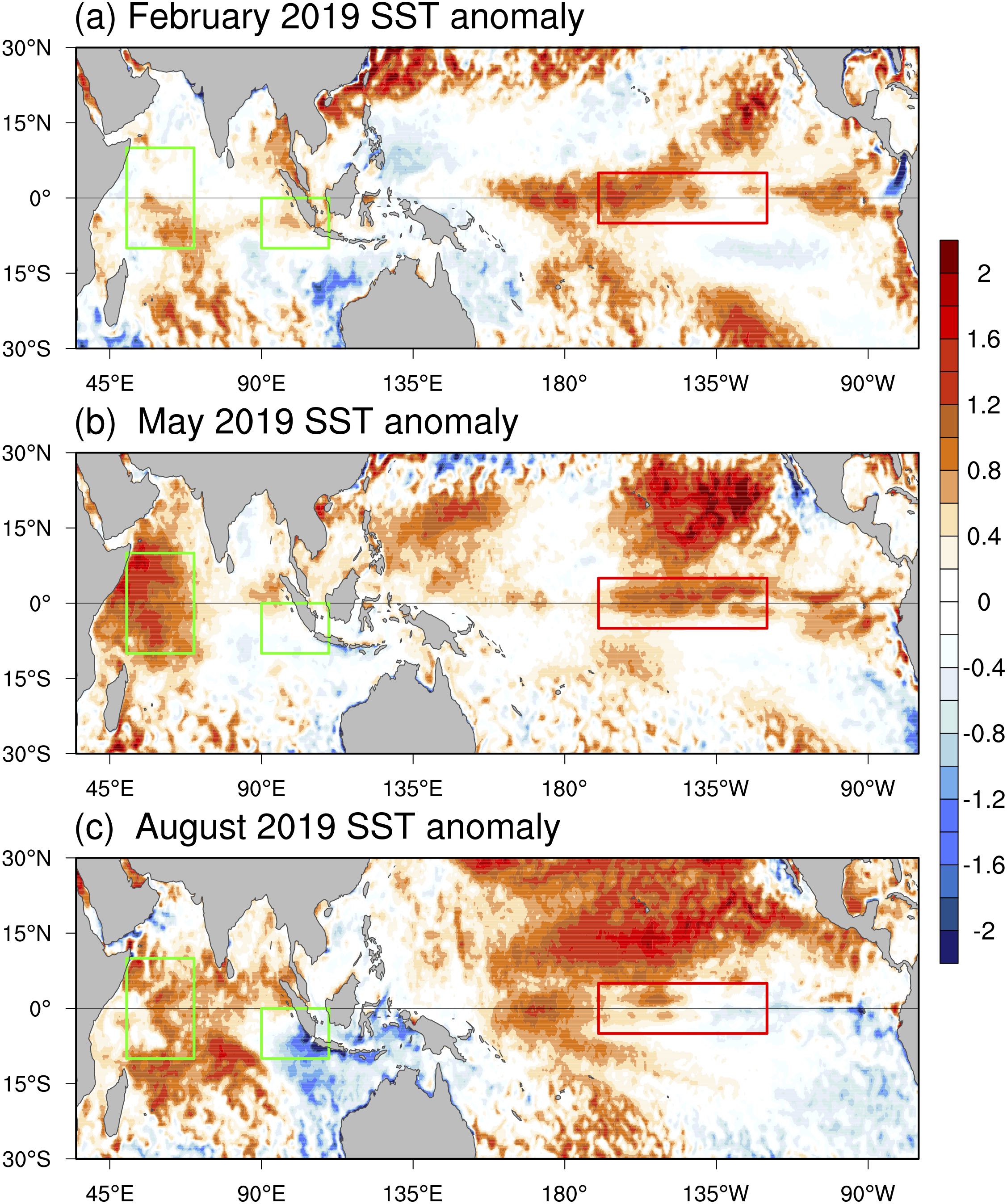The 2019 Indian Ocean Dipole event
Indian Ocean Dipole (IOD) is an ocean-atmosphere coupled phenomenen in Indian Ocean. Dr. Saji N Hameed says 2019 could be one of strongest IOD years ever, which may influence the weather and climate over Australia, India, Indonesia, Singapore this year. More information about the ongoing 2019 IOD event can be seen from Saji N Hameed’s blog.
In Saji’s post, the 2019 August SST anomaly pattern shows a classic IOD over Indian Ocean and the cold SST anomaly over eastern equatorial Pacific. One may conclude that the 2019 IOD event is indenpendent with ENSO.
In Stuecker et al. 2017, GRL and Zhao et al. 2019, GRL, we proposed a null hypothesis framework for the IOD. The dynamical evolution of IOD SST can be determined by seasonal modulated Indian Ocean feedbacks forced by ENSO and stochastic forcings. The IOD Mode Index (DMI) tendency can be written as
where
